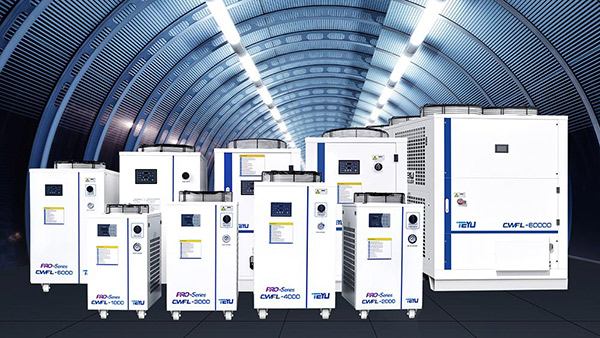Laser technology has permeated every aspect of our lives. With the help of the laser chiller's high-quality and precise temperature control, laser inner engraving technology can fully demonstrate its unique creativity and artistic expression, showcasing more possibilities for laser-processed products, and making our lives more beautiful and magnificent.
Laser Inner Engraving Technology and its Cooling System
In today's rapidly advancing technological landscape, laser technology has permeated every aspect of our lives, bringing countless surprises and transformations to our world. Among them, laser inner engraving technology is gradually becoming a highlight in our lives, thanks to its unique creativity and artistic expressiveness.
Principles and Advantages of Laser Inner Engraving
Laser inner engraving is a process that utilizes lasers to carve transparent materials. The principle involves the precise control of laser energy, pulse width, frequency, and other parameters to induce physical or chemical changes within transparent materials, creating tiny structures or patterns internally.
Laser inner engraving machines are highly suitable for intricate engraving on materials such as crystal glass, quartz glass, optical glass, ordinary glass, tempered glass, and more. Through laser inner engraving, various exquisite patterns and text can be etched inside glass, creating glass products that combine artistic aesthetics with practical value. Additionally, it can be applied in areas like marking ABS resin through the glass and cutting silicon film on the surface of the glass.
Utilizing laser inner engraving technology comes with several advantages, including high precision, efficiency, and flexibility. It enables swift marking and intricate engraving, improving processing efficiency and product quality. Furthermore, laser inner engraving technology reduces material waste and processing time, thereby lowering costs.

Laser Chiller Boosts Laser Inner Engraving Processing
In the process of laser inner engraving, strict control of the heat generated by the laser is crucial. Excessive heat can not only degrade the performance of the laser but also potentially damage internal components, affecting the quality and precision of the engraving. Elevated temperatures can also cause thermal deformation in the material, further compromising the accuracy and composition of the engraving. Hence, a laser chiller is essential to provide precise and stable temperature control, ensuring processing efficiency, enhancing precision, and extending the lifespan of the laser.
In summary, the application of laser inner engraving technology continues to expand, showcasing more possibilities for laser-processed products. With the laser chiller's high-quality and precise temperature control, laser inner engraving technology can fully demonstrate its unique creativity and artistic expression, making our lives more beautiful and magnificent.

We're here for you when you need us.
Please complete the form to contact us, and we'll be happy to help you.










































































































